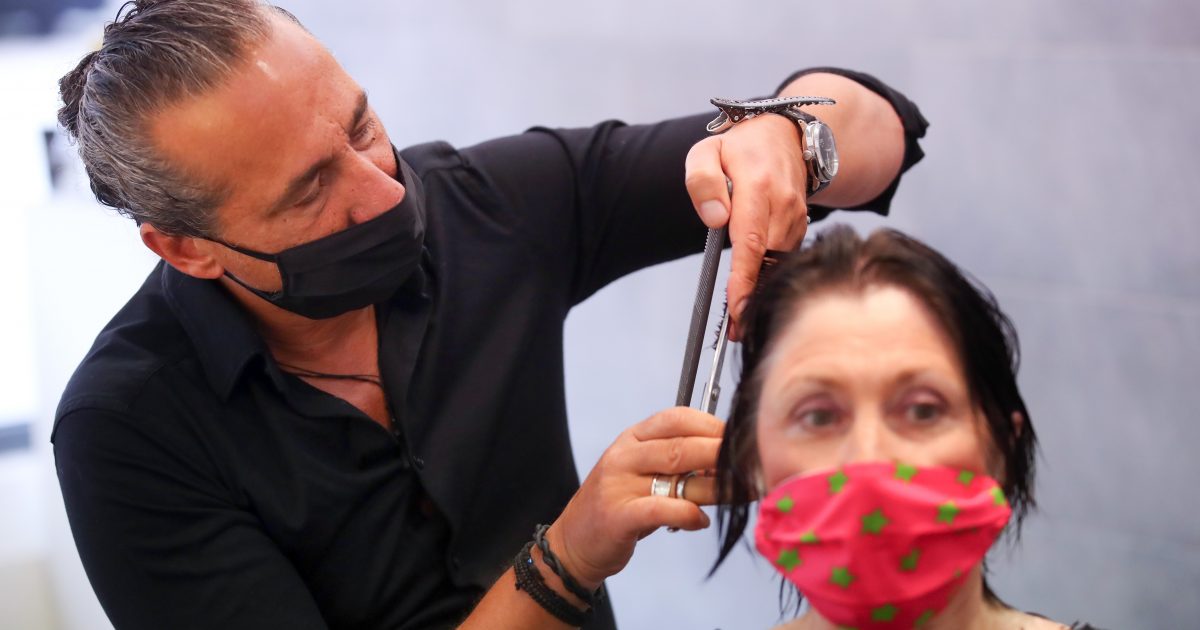Protecting Yourself from Skin Cancer
- A new program in Canada has launched to educate hairdressers on how to spot signs of skin cancer.
- We can get sun damage at any time throughout the year, even in the cold, wintry months. Our experts recommend skin protection techniques like sunscreen usage all year round.
- No matter how vigilant you are about wearing sunscreen and decreasing your risk for skin cancer, its important to still prioritize routine checkups with your dermatologist and always be on the lookout for any skin changes in between visits.
- Melanoma is considered the most deadly type of skin cancer. Paying attention to moles or growths on your skin is an easy way to look out for melanoma since changes to a mole you've had for a while or developing a new growth you don't remembering having on your skin could be signs of of this cancer, according to SurvivorNet's experts.
The program, called Sty-Lives, is teaching hairstylists and barbers how to “detect suspicious skin lesions on the ears, face, and scalp of their clients.” Dr. Miranda Waugh, first year Dermatology resident at the University of Ottawa, and Shannon D’Angelo, medical student at the Northern Ontario School of Medicine, are leading the programing with support from Save Your Skin Foundation and Canadian dermatologists Dr. Lyne Giroux, Dr. David Zloty and Dr. Joel Claveau.
Read MoreAll hair professionals in Canada are eligible to participate and can go online to register.
Understanding Skin Cancer
The Skin Cancer Foundation estimates that over 5 million cases of skin cancer are diagnosed in the United States every year, making it the most common cancer in the United States. And even though most of us aren't soaking up the sun in a bathing suit at this time of year, it's important to remember that the risk of developing skin cancer is very much still there in the winter months.
"My patients ask me all the time, 'Do I really need sunscreen every day, all year round?' The answer is yes," Dr. Dendy Engelman, a board certified dermatologic surgeon at Shafer Clinic Fifth Avenue, previously told SurvivorNet. "People think they only need sun protection when they're in the bright, warm sunshine. But the reality is, we can get sun damage at any time throughout the year, even in the cold, wintry months. Think about when you go skiing. That's a very high risk. Even though it's cold, our skin should be protected."
Dr. Engelman, shared the top five things you can do to avoid skin cancer:
- Avoid sun during peak hours: 10 a.m. to 2 p.m.
- Wear a wide brimmed hat and sunglasses to protect the tops of our heads, the tops of our ears and the delicate area around the eye.
- Wear at least SPF 30 sunscreen and make sure to reapply every two hours or after excessive sweating or swimming.
- Have yearly skin checks (with a professional) because it's difficult to evaluate areas all over the body.
- Avoid tanning beds. There are no "good" tanning beds, and they can significantly increase your risk of skin cancer.
Top 5 Ways to Protect Your Skin From Skin Cancer
No matter how vigilant you are about decreasing your risk for skin cancer, its important to still prioritize routine checkups with your dermatologist and always be on the lookout for any skin changes in between visits.
Checking Your Skin for Melanoma
The three major types of skin cancer are basal cell carcinoma, squamous cell carcinoma and melanoma with melanoma posing a particularly serious risk.
"Melanomas are the deadliest type of skin cancer because they have a tendency to spread to other parts of the body," explains Dr. Anna Pavlick, a medical oncologist with Weill Cornell Medicine who specializes in treating skin cancer.
The American Cancer Society says the risk of melanoma increases as people age with the average age of diagnosis being 65, but the disease is not uncommon among those younger than 30. In fact, it's one of the most common cancers in young adults (especially young women). That being said, it’s important for people of all ages to pay attention to their skin since keeping an eye on moles or growths on the skin is an easy way to check yourself for melanoma.
Examining Your Skin for Melanoma Remember ABCDE
Changes to a mole you've had for a while or developing a new growth you don't remembering having on your skin could be signs of this cancer, according to SurvivorNet's experts. Dr. Cecilia Larocca of the Dana-Farber Cancer Institute gives SurvivorNet an overview of things to look out for with moles using the ABCDE self-screening method:
- Asymmetrical moles: "If you drew a line straight down the center of the mole, would the sides match?"
- Borders that are "irregular, jagged, not smooth." It can also stand for bleeding.
- Colors: "Multiple distinct colors in the mole."
- Diameter: "Larger than 6mm, about the size of a pencil head eraser."
- Evolution: "This may be the most important," she says. "Anything that is changing over time such as gaining color, losing color, painful, itching, hurting, changing shape, etc."
Spots on our skin are often harmless. Still, it's still important to keep an eye on them and reach out to your doctor if you see any changes or find a growth anywhere on your skin that looks suspicious. Also, always remember to stay up-to-date on skin check ups with a professional regardless of you noticing any changes to your skin.
Learn more about SurvivorNet's rigorous medical review process.


